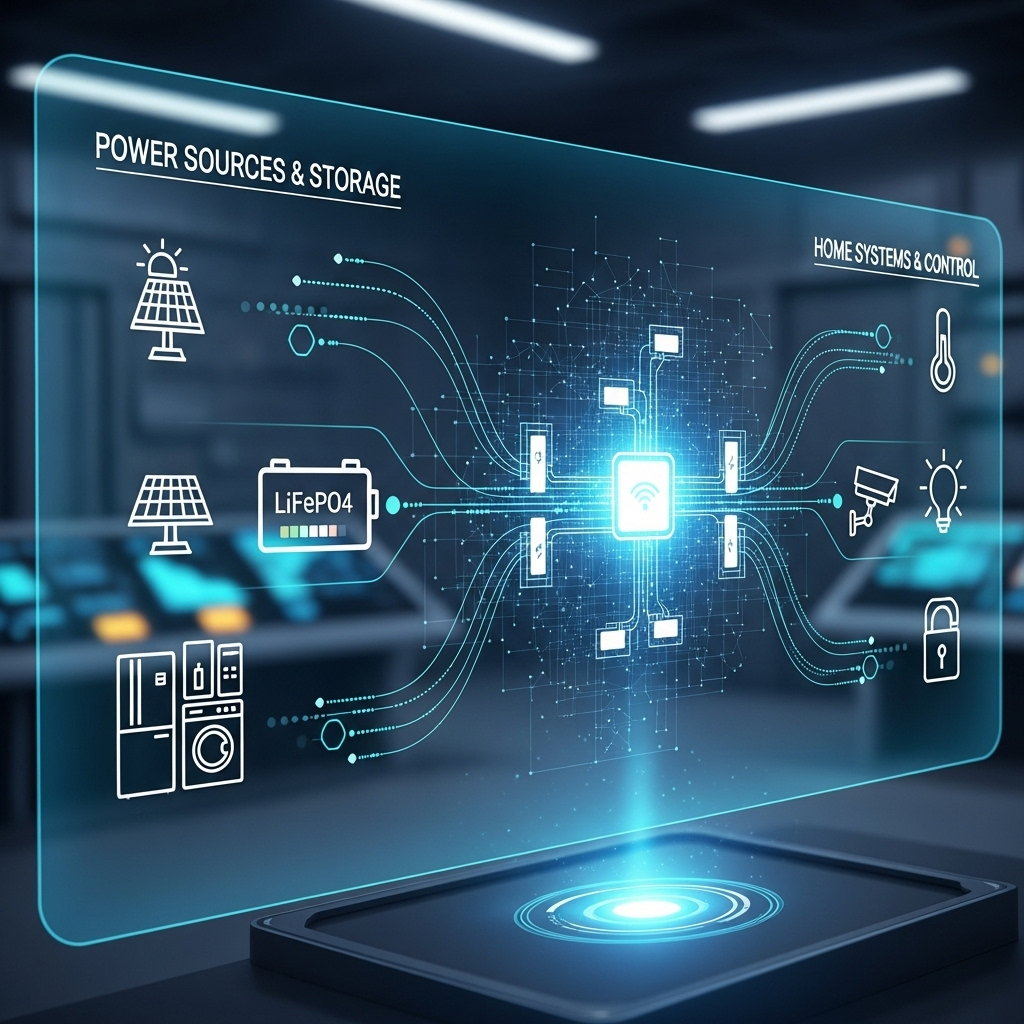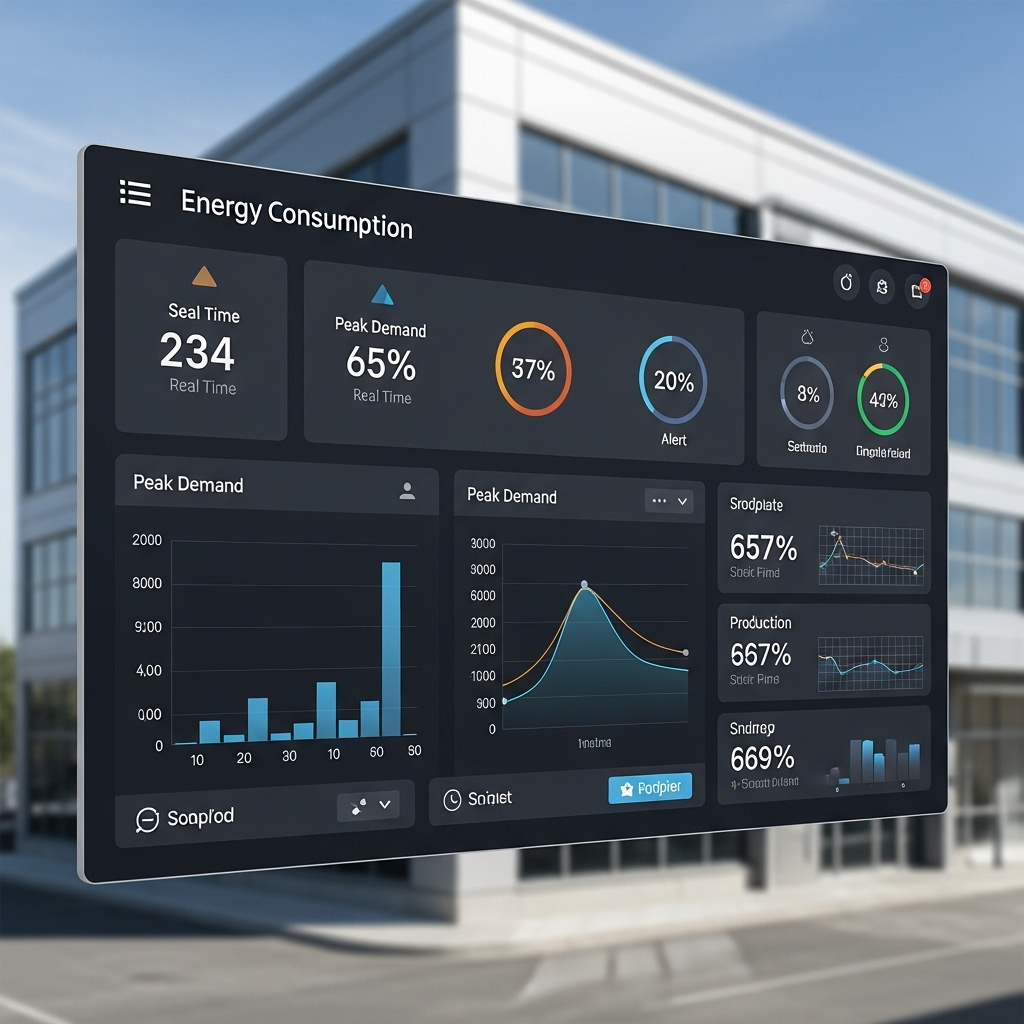In the world of solar energy and battery storage, data is a powerful asset. Two standards, OpenADR and Green Button, are often mentioned, but they serve very different functions. Understanding their distinct roles is key to unlocking the full potential of your energy assets. They are not competitors; instead, they are complementary tools designed for separate tasks. One helps you look back to analyze, while the other helps you act now to control.
What is Green Button? The Key to Your Energy Data
Think of Green Button as a universal key that unlocks your personal energy history. It is a data standard designed to give electricity consumers simple, secure access to their own energy usage information directly from their utility provider. This initiative empowers you to understand exactly how and when you use energy.
Accessing Your Historical Usage
Green Button provides your energy data in a consistent, machine-readable format (typically XML). It works in two main ways: 'Download My Data', which lets you get a file of your past usage, and 'Connect My Data', which allows you to securely and automatically share your data with third-party applications. This is similar to a bank statement for your electricity, providing a detailed record of your consumption over time, often in 15-minute or hourly intervals.
Use Cases for Solar and Storage Owners
For anyone considering or already owning a solar and storage system, this historical data is invaluable. You can use it to:
- Right-Size Your System: By analyzing your past consumption patterns, you can accurately determine the optimal size for your solar panel array and battery storage. This prevents overspending on an oversized system or being disappointed by an undersized one.
- Optimize Energy Habits: The data reveals your peak usage times. With this knowledge, you can shift heavy appliance use to off-peak hours or to times when your solar panels are generating the most power, directly reducing your utility bills.
- Verify System Performance: After installing a solar or storage system, you can use ongoing Green Button data to compare your new consumption profile with your old one, verifying the savings and return on your investment.
What is OpenADR? The Language of Grid Communication
If Green Button is about looking backward at data, OpenADR (Open Automated Demand Response) is about acting on information in the present. It is a secure, two-way communication protocol that allows electricity providers to send signals to customer-owned equipment to manage energy demand automatically. It is the language that helps the grid maintain balance.
Enabling Automated Demand Response (DR)
Demand Response (DR) programs are critical for grid stability. During times of high demand, like a hot summer afternoon, utilities need ways to reduce strain on the grid. OpenADR automates this process. A utility or grid operator (a Virtual Top Node, or VTN) sends a signal to participating devices (Virtual End Nodes, or VENs), such as a smart thermostat, EV charger, or a home battery system. This signal might indicate a high price period or a direct request to reduce consumption. The device then responds automatically based on pre-set instructions, for example, by pre-cooling a building or discharging a battery to support the grid.
How It Works: Signals and Events
The process is seamless and automated. The utility sends out a DR 'event' containing information like the start time, duration, and magnitude of the requested change. The VEN at the customer's site receives this signal and executes the command. For an energy storage system, this could mean discharging stored solar power to the grid, earning the system owner revenue. This real-time action helps prevent blackouts and supports the integration of more renewable energy. As noted in the IRENA report Grid Codes for Renewable Powered Systems, such standardized communication is vital for managing grids with high levels of inverter-based resources like solar and batteries.
Head-to-Head Comparison: Key Differences at a Glance
To clarify the roles of each standard, here is a direct comparison:
| Feature | Green Button | OpenADR |
|---|---|---|
| Primary Function | Data Access & Analysis | Automated Control & Communication |
| Data Type | Historical usage data (kWh, kW) | Real-time event signals (price, load dispatch) |
| Communication Flow | One-way (Utility to Consumer/App) | Two-way (Utility/Grid Operator to Asset) |
| Primary User | Energy Consumer, Energy Analyst | Utility, Grid Operator, Aggregator |
| Main Goal | Inform decisions, verify performance | Maintain grid stability, manage demand |
| Typical Application | Sizing solar systems, energy audits | Participating in demand response markets |
Practical Scenarios: Choosing the Right Standard
Understanding the theory is one thing; applying it is another. Here are two common scenarios that illustrate when you would use each standard.
Scenario 1: A Homeowner Planning for Solar
A family wants to install solar panels and a battery to reduce their carbon footprint and electricity bills. Before contacting installers, they need to know how much energy they use and when. Solution: Green Button is the perfect tool. They can use it to download 12 months of their home's interval data. This data will show their daily and seasonal consumption peaks, allowing them to work with an installer to design a system that meets their specific needs without guesswork.
Scenario 2: A Commercial Facility with an ESS
A warehouse has installed a large energy storage system (ESS) to lower its expensive peak demand charges. The facility manager now wants to create a new revenue stream from this asset. Solution: OpenADR is the required technology. By integrating an OpenADR-certified controller, the ESS can enroll in a local utility's DR program. The system will then automatically respond to grid signals, discharging power during peak events and earning payments, turning a cost-saving asset into a profitable one.
The Broader Context: Data Standards and the Future Grid
Both Green Button and OpenADR are foundational pillars of a modern, decentralized, and resilient electrical grid. As the U.S. Department of Energy's SmartGrid.gov initiative has long emphasized, standards and interoperability are essential for grid modernization. They enable the seamless integration of distributed energy resources (DERs) like solar and storage. According to the International Energy Agency's report, Renewable Energy for Industry, establishing common methods for calculating and reporting energy data is crucial for building transparent and efficient energy markets.
To effectively participate in these markets or even just optimize your own system, you must first understand its capabilities. Key metrics like a battery's State of Charge (SoC), Depth of Discharge (DoD), and Round-Trip Efficiency are critical. A deep understanding of these figures is the first step toward leveraging standards like OpenADR and Green Button. You can review a complete guide in this ultimate reference for solar and storage performance, which details the metrics that define your system's potential.
Final Thoughts: Data as a Powerful Asset
Ultimately, OpenADR and Green Button are two sides of the same coin: energy intelligence. Green Button empowers you with the knowledge of your past energy use, enabling smarter decisions about future investments. OpenADR gives your assets the ability to act on real-time information, contributing to grid health while creating value. By understanding that Green Button is for analysis and OpenADR is for action, you can move from being a passive energy consumer to an active participant in the clean energy transition.
Frequently Asked Questions
Is OpenADR a replacement for Green Button?
No, they serve different and complementary purposes. Green Button provides you with your historical energy data for analysis. OpenADR is a communication protocol that allows your devices to be actively controlled as part of a grid program. You might use Green Button data to decide if an OpenADR program is right for you.
Do I need special hardware to use Green Button?
No. If your utility supports the Green Button standard, you typically only need access to your online utility account. From there, you can download your data or authorize third-party apps to access it for you. No additional hardware is required at your home or business.
Can my home solar battery participate in OpenADR programs?
This depends on your system and location. Your energy storage system must have a controller (a VEN) that is certified for the OpenADR protocol. Additionally, your local utility or a third-party aggregator must offer a demand response program that you can join. Many modern, high-quality energy storage systems are being built with this capability.
Is my data secure with these standards?
Yes, both standards are built with security as a priority. Green Button requires your explicit consent before any data is shared with a third party. OpenADR uses established cybersecurity measures, including digital certificates and encrypted communication channels, to ensure that messages between the grid operator and your devices are secure and authentic.





Leave a comment
All comments are moderated before being published.
This site is protected by hCaptcha and the hCaptcha Privacy Policy and Terms of Service apply.